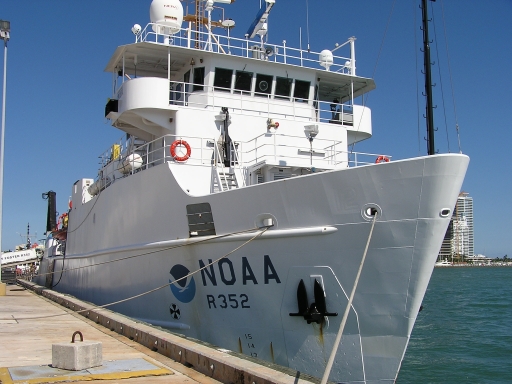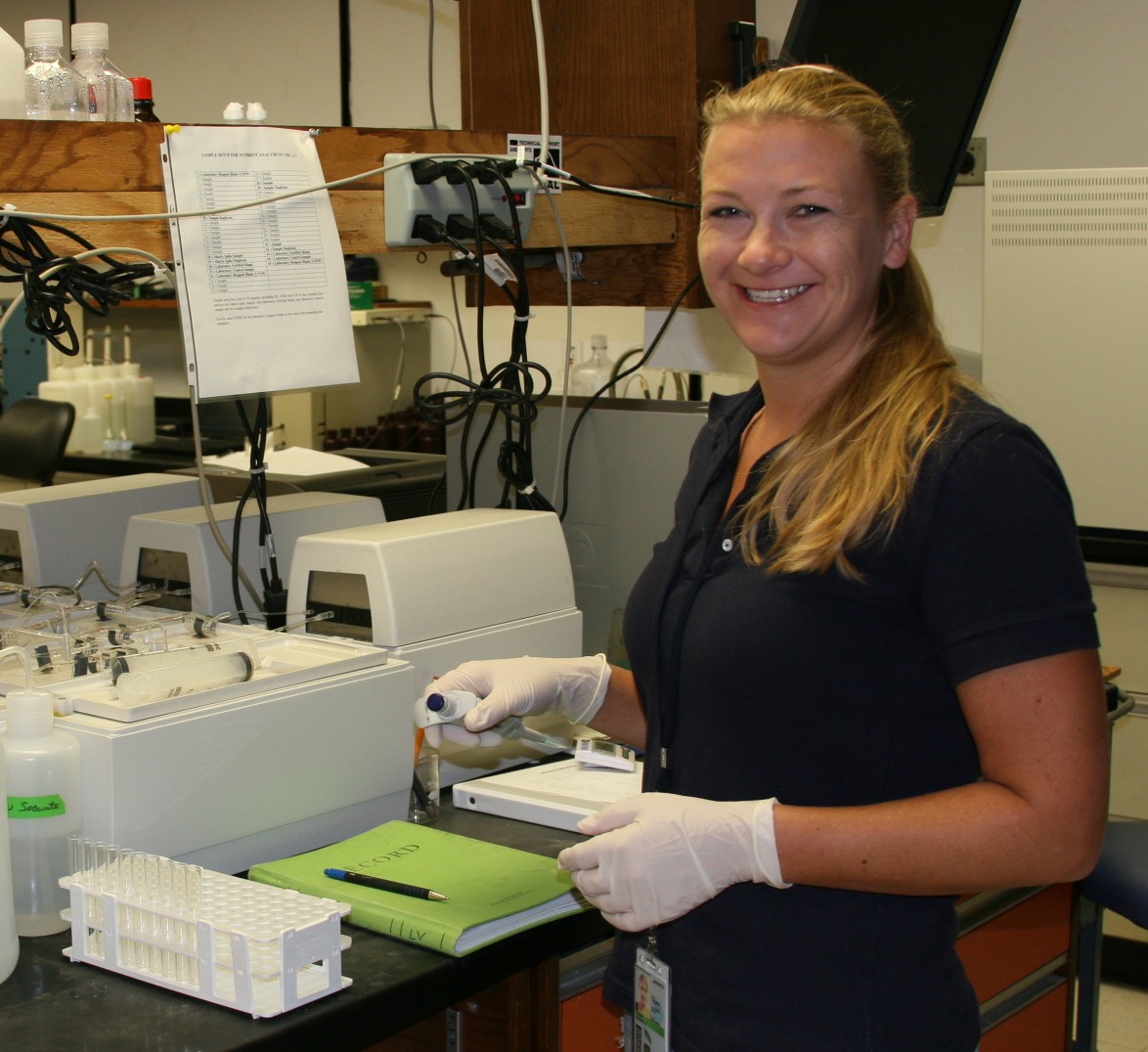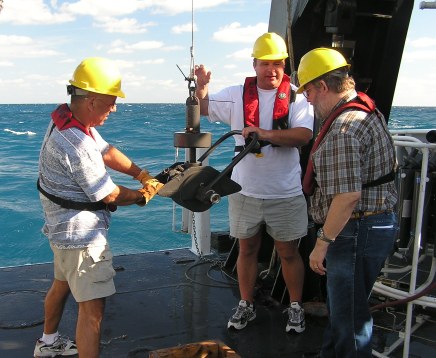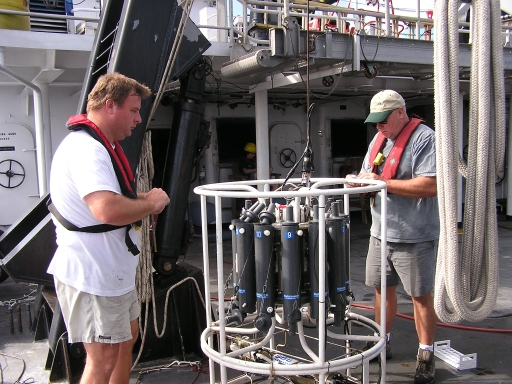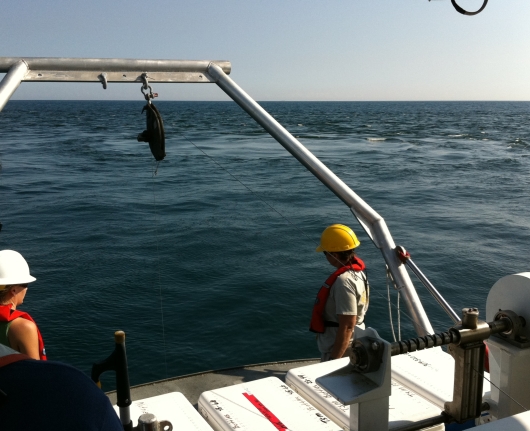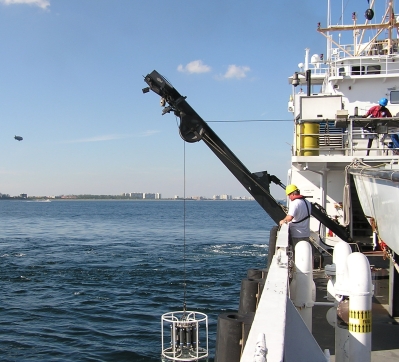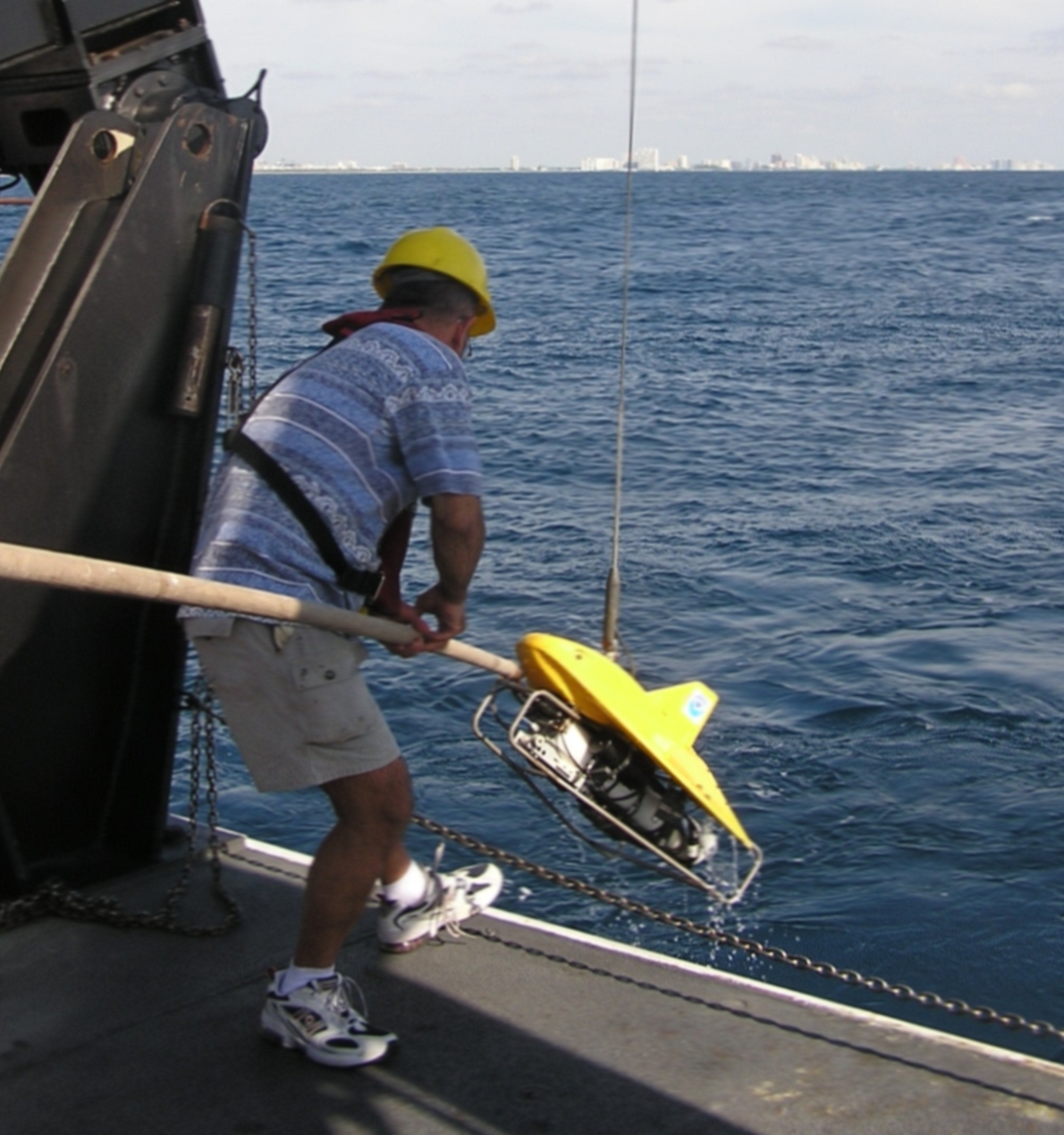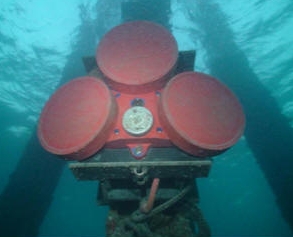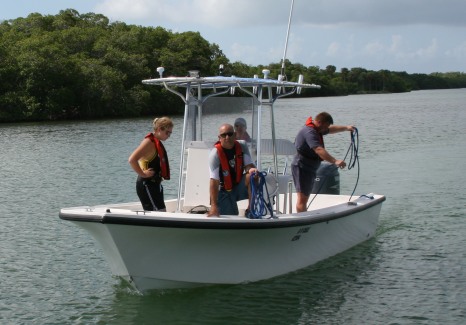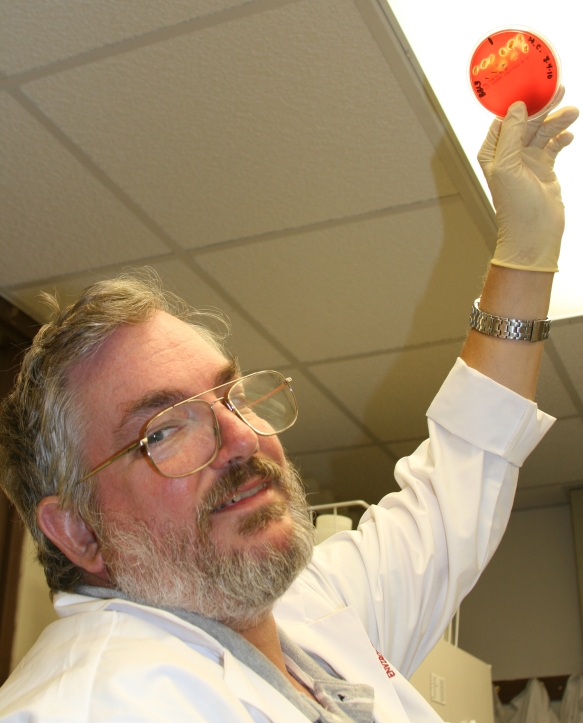The Florida Area Coastal Environment (FACE) program
The FACE program was designed to understand the many controlling oceanographic and coastal environmental factors that influence
Florida public health and coastal biota, and to provide this knowledge to the area's environmental regulators, resource managers, utility operators, and to the public.
The broad objectives of the FACE project were to:
Quantify the sources of selected nutrients and microbial contaminants into critical areas of interest within the FACE purview.
Measure relevant physical parameters such as ocean currents and meteorology with which the chemical measurements must be interpreted.
Determine the likely exposure of coral reef resources to those nutrients.
The study area of FACE covered 467 km of coastline in Miami-Dade to Brevard counties. Included in this area are six treated wastewater plants: Miami
Central, Miami North, Hollywood, Broward, Boca Raton, and South Central, which together contribute ~1 million cubic meters (284 millions of gallons) per day to
the region. This coastal area receives fresh water discharged through six inlets, from the Miami Harbor inlet in the south to the Boynton inlet in the north.
This area is the home of nearly 5.5 million people (U S Census Bureau, 2006) and an economy heavily dependent on a healthy offshore environment.
Activities and Projects
-
Tracer Studies. The fate plumes from treated-wastewater outfalls were studied by the insertion of chemical dyes into the wastwater stream and then sampling the water column down-current from the outfall. A number of these studies were conducted on the outfalls of SE florida. See webpage for details.
-
The Florida Outfalls Survey. Two cruises were undertaken on the NOAA Research Ship Nancy Foster to perform surveys of each of the six TWWP plumes, in 2006 and 2008. The studies included multibeam scans, nutrient and biological sample analyses, and three-dimensional nutrient surveys. Results are reported here (pdf).
-
The Florida Outfalls and Coastal Inlet Experiment (FOCITE-1, FOCITE-2). These experiments employed two deliberate tracers: rhodamine-WT and SF6. In FOCITE1 (February 2007), both the South Central TWWP plume and the Boynton Inlet plume were studied during the winter season. In the FOCITE-2 experiment (June 2008), the South Central TWWP plume was studied under summer conditions.
-
The Boynton Inlet 48-hour Intensives. Two 2-day sampling intensives were conducted at the Boynton Inlet, resulting in the sampling of eight ebb and eight flood tide flows (June 3-4 and September 26-28, 2007). These samples were investigated for chemical and biological properties. In addition, high-quality water flow measurements were conducted. These results are reported here (pdf).
-
The Boynton-Delray Monitoring Cruises (BD-WQM). A series of eighteen water quality monitoring sites were sampled by the R/V Cable or R/V Nancy Foster approximately bimonthly from June 2007 through July 2008. The samples were analyzed for nutrients and biological entities, A report was published (pdf).
-
The Broward County Coastal Water Quality Program surveyed the chemical, physical, and microbiological monitoring (monthly) of the coastal ocean off of Broward County. The emphasis was on the areas affected by the Broward and Hollywood outfalls, and the Port Everglades and Hillsboro inlets. This was an extension of the 1-year bimonthly monitoring program which took place in the Boynton Beach/Delray coastal ocean. Measurements included nutrients, microbiology, and ocean currents.
-
The Port Everglades Shipping Channel Experiment (PESCE), a long-term measurement system that estimated the flow through the Port Everglades Inlet through high-quality acoustic Doppler current profilier (ADCP) instrumentation. Periodically, samples were obtained during ebb flow for microbial and nutrient analysis. These results of this study are available here (pdf).
-
The Southeast Florida Inlets program. While there is agreement that inlets are a significant source of land-based pollution, characterization of the water flow and nutrient fluxes through these inlets has been problematic. This program conducted investigations of the Boynton, Boca Raton, Hillsboro, and Port Everglades inlets. See webpage for details.
- The Numeric Nutrient Criteria Study provided concurrent water column and coral reef status data
for four coral assemblies off of Miami-Dade and Broward County. These results were used by the Florida Department of Environmental Protection to determine
numeric nutrient criteria for the coastal waters of SE Florida (for an overview see pdf). The water column
was monitored by visiting twenty-seven sites at coral reefs, at known point sources (inlets and treated-wastewater outfalls) and in between sites away from
point sources. A brief outline is given here (pdf).
Scientists and support staff
FACE Principle Investigators: Thomas Carsey (retired), Jack Stamates (retired)
NOAA nutrients: Jia-Zhong Zhang, Charles Fischer, Charles Featherstone
NOAA microbiology: Chris Sinigalliano, Maribeth Gidley
NOAA Upwelling Studies: Lewis Gramer
Marine Engineering: Joseph Bishop
Associated Investigators: John Proni (retired), Frederick Bloetscher (Florida Atlantic University, Boca Raton, Florida), and Dan Meeroff (Florida Atlantic University, Boca Raton, Florida).

